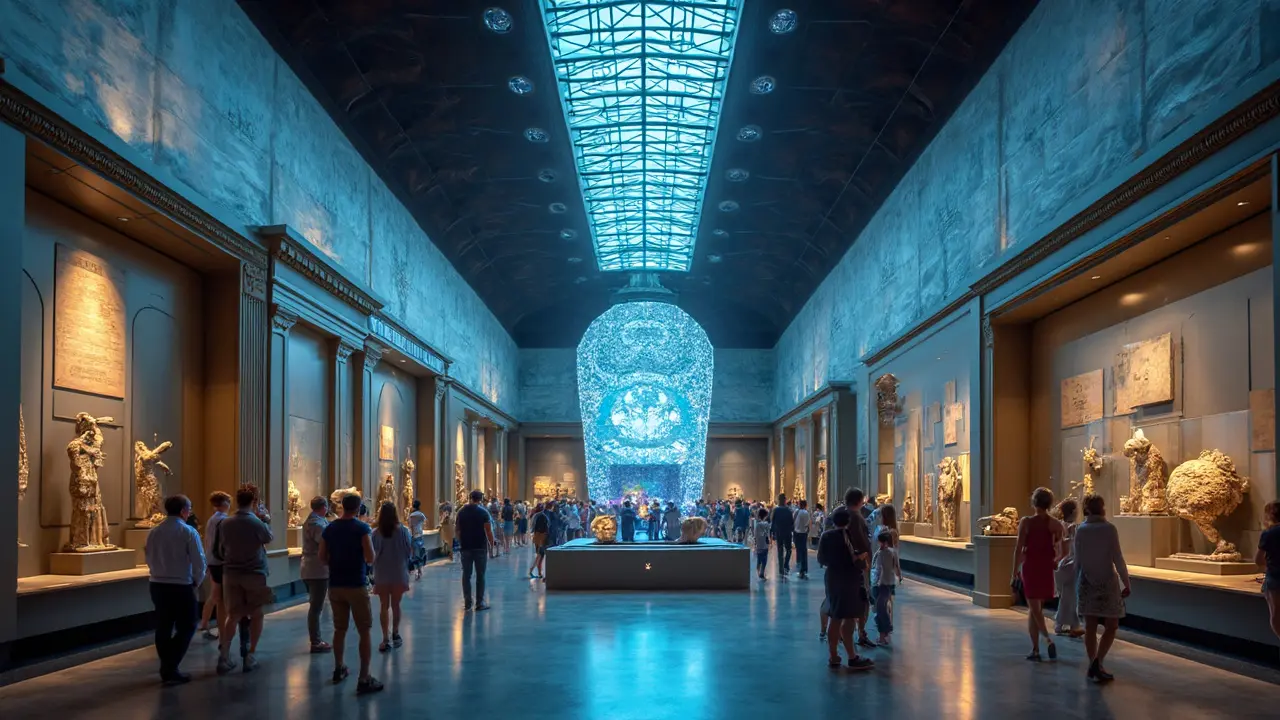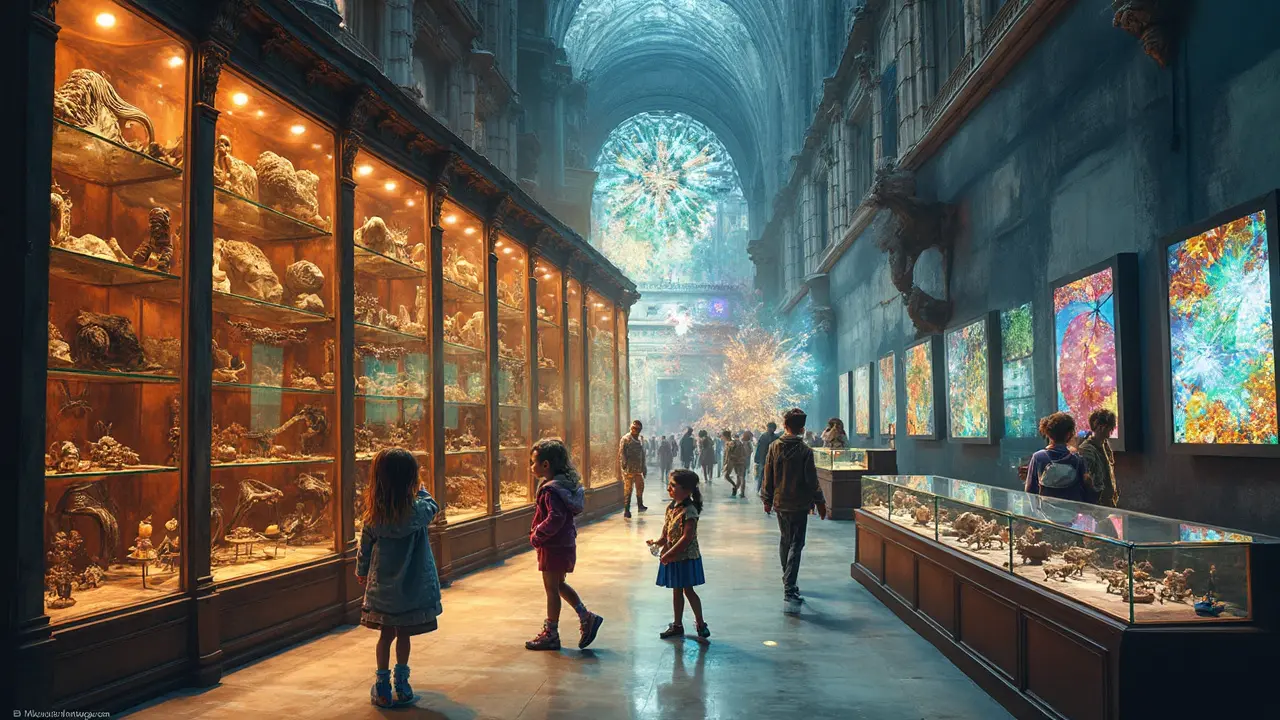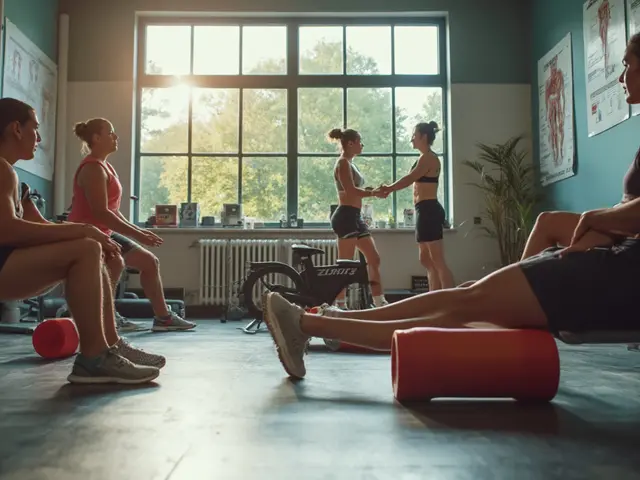If you’ve walked around central London, you’ve definitely noticed just how packed the city is with museums. Whether you’re queuing outside the Natural History Museum in South Kensington or getting lost in the halls of the British Museum near Holborn, it’s clear—London’s love for museums runs deep.
Here’s something not everyone knows: the roots of these museums go way back, even before the world-famous British Museum opened in 1759. Back then, collectors filled their homes with weird artifacts from all over the world. The rich and curious would show off mummies, fossils, and oddities to impress friends and strangers. Fast forward a couple of centuries, and now London’s museums are for everyone—free entry in most places (thank you, UK government!), hands-on galleries for kids, late-night events, and even pop-up shows about TikTok and video games.
It’s not just about staring at old things in glass cases anymore. Head over to the Science Museum and you’ll find school groups building robots and grandparents hitting up the IMAX. Or drop by the V&A if you’re into fashion and design, where you can actually touch some displays during special “object handling” sessions. The vibe is always changing; there’s always something new in the city that never chills out.
- Ancient Curiosities and How It All Started
- 19th Century: The Golden Era of London Museums
- How World Events Shaped Museum Collections
- From Display Cases to Interactive Experiences
- Hidden Museum Gems Only Londoners Know
- Tips for Getting the Most Out of London’s Museums
Ancient Curiosities and How It All Started
Long before London was known for its huge museums, people here had a different way of collecting the weird and wonderful. It kicked off in the 1600s when private collectors—usually rich, curious types—kept their own stash of artifacts in cabinets or small rooms, calling them "cabinets of curiosities." Think of them as the first version of museums, but way more cramped and exclusive. These cabinets often included stuffed animals, ancient coins, creepy skeletons, exotic shells, and even shrunken heads. Half bragging rights, half attempt to show off how much you knew about the world.
One famous early London collector was Elias Ashmole, whose odd collections actually formed the basis of Oxford's Ashmolean Museum. In London, Hans Sloane took things to the next level. He snagged thousands of books, plants, fossils, and even a narwhal horn (which people used to claim was a unicorn’s horn). When he died in 1753, Sloane donated over 71,000 items. That collection became the backbone of the British Museum, which opened a few years later and was one of the first national museums in the world that let anyone walk in through the doors for free.
For some proper numbers, take a look at this comparison:
| Year | Notable Event | Number of Items Collected |
|---|---|---|
| 1683 | Ashmolean opens in Oxford | ~24,000 |
| 1753 | Sloane's collection forms British Museum | 71,000+ |
| 1759 | British Museum opens in London | About 80,000 |
Visiting museums in those days was nothing like now. It felt a bit like getting invited to an exclusive club. Over time, though, people started to realise that shared knowledge and access to these wonders could benefit everyone, not just the wealthy elite. That’s what makes today's London museums stand out compared to those early, locked-away collections—they’re open, inviting, and always adding to the collection.
19th Century: The Golden Era of London Museums
The 1800s were a game-changer for the London museums scene. By the mid-19th century, London was booming thanks to the Industrial Revolution. Money, new tech, and a growing middle class created demand for public spaces to learn and hang out. This is when the big names appeared—think the Natural History Museum, Victoria and Albert Museum (V&A), and the Science Museum, all popping up in South Kensington.
The Great Exhibition of 1851, held in Hyde Park, was massive—a proper showcase of global arts, science, and industry. The profit from this event helped buy land for what’s now "Albertopolis"—that stretch of top museums along Exhibition Road. Suddenly, Londoners didn’t need to be rich or well-connected to check out dinosaur bones or Sistine Chapel-style art.
Here’s a quick snapshot of when these local icons first opened:
| Museum | Year Opened | Location |
|---|---|---|
| Victoria & Albert Museum | 1852 | South Kensington |
| Natural History Museum | 1881 | South Kensington |
| Science Museum | 1857 (as part of South Kensington Museum) | South Kensington |
19th-century museum design was all about the wow factor—high ceilings, giant halls, and lots of marble. These buildings were meant to impress, but they also opened their doors to everyone. Free admission set a trend that carries on today in most government-funded spots.
If you live in London or visit often, some tips for enjoying these 19th-century gems:
- Early mornings are less packed—makes a huge difference, especially during half-term.
- Look for special events—V&A Friday Lates or themed museum sleepovers at the Natural History Museum are both a right laugh.
- The museums are super easy to reach from South Kensington tube; there’s even a tunnel straight from the station, so you won’t get soaked if it’s raining.
The 1800s set the groundwork for how museums work in the UK today—open doors, sharing knowledge, and making learning a bit more fun for all of us.
How World Events Shaped Museum Collections
You can’t talk about London museums without looking at how global events have packed the rooms with what you see today. War, empire, trade, even social movements—all of these have had a huge impact on what sits behind the glass at places like the British Museum and the Imperial War Museum.
For example, the British Museum is famous (and sometimes controversial) for items like the Rosetta Stone or Parthenon Marbles. These didn’t just appear here by magic. A lot of them came to London during the height of the British Empire, in the 18th and 19th centuries, when British collectors and officials brought (or sometimes took) objects from across the world. That old saying, “finders keepers,” doesn’t always go down well—there’s a big debate today about returning some of these items to their home countries.
During World War II, things shifted again. Museums scrambled to keep their collections safe as London was bombed. The British Museum, for instance, moved thousands of important artefacts to underground tunnels in Wales. Meanwhile, new collections popped up, like those at the Imperial War Museum, focusing on the first-hand stories and objects from soldiers and civilians affected by conflicts.
More recently, big events like the fall of the Berlin Wall or Brexit have led London’s museums to rethink what they display or collect. The Museum of London snapped up protest banners and personal objects related to these events for future generations. Basically, if something massive happens, odds are it changes what you’ll find in the city’s museums sooner or later.
| Event | Impact on London Museums |
|---|---|
| British Empire (18th–19th C.) | Huge influx of global artefacts (e.g., Egyptian, Greek, Indian collections) |
| World War II | Evacuation of artefacts; focus on war history and personal stories |
| Decolonisation (1950s–70s) | Debate over ownership and calls for repatriation of collections |
| Modern Social Movements | Acquisition of protest objects, personal stories, pop culture |
So next time you’re checking out a display case or reading a little plaque in a London museum, think about what had to happen for that object to end up right there. Sometimes it’s politics, sometimes it’s protection, sometimes it’s people just wanting to tell their side of the story.

From Display Cases to Interactive Experiences
Museums in London have totally flipped the script in the past few decades. The old-school way was pretty simple: walk into a big, echoey room and look at stuff behind glass. Sure, you’d see loads of fascinating things, but unless you were reading labels all day, it could feel a bit distant. These days, expect a very different vibe.
The Science Museum in South Kensington is one of the best examples of how things have leveled up. Instead of just checking out engines or rockets behind barriers, you can actually play with science. Kids and adults mess around with physics experiments in Wonderlab, and there’s even a “Who Am I?” gallery where you test your reaction times and meet a robot that recognizes your emotions. About 3.3 million people visited in 2023—proof that hands-on is the way to go.
Then there’s the British Museum’s Samsung Digital Discovery Centre, which gets packed out on weekends. Here, families use iPads for treasure hunts through the galleries, or try out digital art inspired by ancient objects. Virtual reality tours are popping up more often, especially for the bigger exhibits, since not everyone can handle crowds or long lines. The Natural History Museum started using augmented reality with its dinos, so you can basically see a T.Rex stomp around on your phone. Wild, right?
The Victoria & Albert Museum regularly runs late-night events where you can make your own badges, try your hand at 3D printing, or chat with designers in pop-up workshops. London’s art and design crowd loves these because there’s a buzz, and you actually get to do more than watch.
Want a quick look at how things have changed? Here’s a table that shows what London museums looked like before and after the interactive boom:
| Before | Now |
|---|---|
| Static displays behind glass | Hands-on exhibits and live demos |
| Quiet galleries, lots of signs | Workshops, events, even live music |
| “Look but don’t touch” rule everywhere | Object handling sessions and VR/AR activities |
| One-way learning (just reading or listening) | Interactive digital games for all ages |
It pays off. Surveys from London & Partners (the city’s official tourism agency) show that 59% of visitors under 35 said interactive experiences made them more likely to extend their museum trip or visit again. So, if it’s been a while since you last popped into a London museum, you’ll be surprised at how lively it all feels today—less like a library, more like a playground for your brain.
Hidden Museum Gems Only Londoners Know
Everyone’s heard of the big names like the British Museum, but London has some low-key museums that fly under the radar—even some locals miss out. Tired of crowds? Here are a few spots where you get that real London vibe and usually no lines.
The Old Operating Theatre Museum near London Bridge is a real eye-opener. Nestled above St Thomas’ Church, it’s the oldest surviving surgical theatre in Europe. It smells of herbs and wood, and you literally squeeze up a creaky spiral staircase to see where Victorian doctors did surgery—often without anaesthetic. The museum staff sometimes run demos using old surgical tools (no blood, don’t worry). As Dr. Lindsey Fitzharris, a medical historian, puts it:
“You can almost hear the echoes of Victorian surgeons as they worked—medicine here was raw, risky, and totally gripping.”
| Museum | Borough | Specialty |
|---|---|---|
| Old Operating Theatre Museum | Southwark | Medical History |
| Grant Museum of Zoology | Camden | Rare animal specimens |
| Sir John Soane’s Museum | Westminster | Architecture & Art |
| Museum of Brands | Kensington & Chelsea | Consumer culture |
| Foundling Museum | Camden | London’s first children’s charity |
Ever seen a jar of moles, or a quagga skeleton? The Grant Museum of Zoology at UCL is your place. Scientists still use the collection for real research. Not a science nerd? It’s still wild to see such rare animals right in London museums.
If you want old-school luxury, Sir John Soane’s Museum feels like sneaking into someone’s home. The rooms are jammed with art and eccentric objects—his secret candle-lit crypt even holds a real sarcophagus. Fun fact: Friday evening candlelight tours book up fast, so grab tickets early.
The Museum of Brands in Notting Hill is basically a nostalgia trip. You can walk through 150 years of everyday packaging—everything from vintage Mars bars to post-war soap. It’s a favourite for people who like their history with a dose of retro design.
- Tip: Most of these places are free or under £10.
- Visit midweek or late afternoons to avoid school groups.
- Follow their Instagram pages for pop-up talks or quirky temporary displays.
The thing is, these hidden spots deliver something different than the classics. You get closer to the stories, locals, and the gritty side of London life that most tourists miss. Want a fresh museum experience? Try one of these gems next time you’re out.
Tips for Getting the Most Out of London’s Museums
Everyone loves the idea of free museums, but if you show up at the British Museum at 1pm during school holidays, you’ll mostly get up close and personal with someone’s back. To dodge the crowds, hit big-name spots on weekday mornings or later in the afternoon. Lots of places now open for special "museum lates." The Science Museum, for example, does adults-only nights every last Wednesday of the month—no kids, just cocktails and hands-on demos.
Many people don’t know that some London museums, like the Natural History Museum and V&A, have quiet hours for those who prefer less noise or need a more relaxed pace. Check each museum’s site for these schedules, especially if you or your mates need an autistic-friendly time or just hate chaos.
- Book free tickets ahead if you want to skip the main queue—the British Museum, Science Museum, and National Gallery all let you do this online.
- Fancy skipping the famous dinosaurs to see something nobody else knows about? The Natural History Museum’s Treasures Gallery hides a moon rock and Charles Darwin’s pigeon bones.
- Download museum apps before turning up. The British Museum's app offers highlights routes if you don't want to wander aimlessly for hours.
- Not keen on food court prices? Bring your own sandwich—both the V&A and Science Museum let you eat packed lunches in their picnic rooms. It can save you at least £10 per head.
- If you’re going as a family, check out the Kids’ Packs at the Museum of London. They’ve got scavenger hunts and games you can do together for free.
Here’s a quick table to break down the busiest and quietest times for some of London museums people visit the most:
| Museum | Quietest Time | Busiest Time |
|---|---|---|
| British Museum | Weekdays before 11am / Thursday evenings | Weekends 12pm-4pm, school holidays |
| Natural History Museum | Weekdays after 3pm | Weekends 11am-2pm, school holidays |
| Science Museum | Late afternoons on weekdays | Weekdays 10am-2pm, weekends all day |
| V&A Museum | Wednesday and Friday evenings | Saturday afternoons |
Remember, most museums suggest a donation—nobody will glare at you if you don’t pay, but dropping a coin in the box keeps the free entry going for everyone. Lastly, keep an eye out for pop-up exhibitions and community-led tours; London museums often work with local groups, which means you might stumble onto something surprising that’s not even on the official map.





